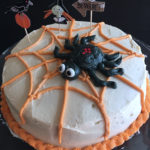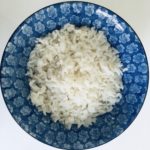I have celiac disease, which means that I must be on a gluten-free diet for the rest of my life. The path that led to my diagnosis was long and confusing, typical for many people with celiac disease.
I have always been an active and ambitious person. I had some physical problems as a child — a skin condition called vitiligo and asthma — but they didn’t stop me from succeeding in school and in sports. When I was young, I didn’t like bread, donuts, or cereal — a sign that these things weren’t good for me. After graduating from college I became a high school history teacher and a volleyball coach. I worked hard and I played hard!
In my 20s, my health started to gradually deteriorate — my asthma worsened, my vision became blurry so I started wearing glasses, and excruciating leg cramps woke me up at night. I was tired at odd times, falling asleep at my desk between classes and in the car on the way home after school. I had tummy troubles but I didn’t think it was anything abnormal, even though there were times that I was doubled over in pain. I thought I just had a sensitive stomach, probably a lactose intolerance, and I chalked up all my problems to the stress of teaching.
Over the next 10 years, I would add dizziness, bone and joint pain, stomach aches, nausea, mental fuzziness, shortness of breath, mood swings, chronic yeast infections, dehydration, obsessive compulsive tendencies, weak fingernails and thinning hair to my list of sporadic, odd and seemingly unrelated symptoms. Doctors didn’t know what was causing my severe anemia and gave me a bone marrow exam to test for cancer. I left for my honeymoon to India without calling to find out the results — if I had cancer, I didn’t want to know it until after the most wonderful trip of my life.
The cancer test was negative, but doctors still did not know the cause of my anemia nor why my list of health problems seemed to be getting longer each year. When my daily stomach aches became so intense that I had to leave work to lay down in my car, my mother took matters into her own hands. She went on an internet quest to find out what was wrong with me. What she found changed my life.
She found celiac disease, an autoimmune condition in which the body mistakes gluten (a protein found in wheat, barley and rye) as a foreign invader and attacks, damaging its own organs in the process. The cure? There is none. The treatment? Don’t eat gluten. I never could have imagined that all my problems could be caused by something I was eating, but this was like a bell going off. This was it!
The next day I had an appointment with my internist as a follow-up to the anemia tests. Armed with a pile of pages about the gluten-free diet that I had printed out from websites, I told him that I wanted to be tested for celiac disease. He was taken aback and a little skeptical, and after I explained, he told me that he needed to make a phone call — he had to call a gastroenterologist to find out how to test for celiac! I got the blood test and sure enough, it came out positive. I then had a biopsy and met with a gastroenterologist who informed me that yes, I did have celiac disease and that I was his first ever diagnosis of the disease! Well, this was obvious when he told me to stop eating gluten and sent me on my way with no other advice at all.
Off I went, confident and excited, to find my gluten-free food. My first trip to the grocery store ended in tears, however. I felt lost, alone and… hungry! I called my mom who said she would start the diet that same day. Thank goodness she became my gluten-free buddy — it made the journey so much easier. Now, years later, things are better for people just starting out on a gluten-free diet. There are so many more products and resources and there is more awareness (although we still have a lot of work to do!) Whatever the challenges I had to face, it was all worth it.
After changing my diet, I experienced dramatic physical and mental changes. Some occurred immediately, some within a few months, and some a year, but ALL of my health problems that had been plaguing me for so long disappeared. I had more energy than ever and no more stomach pain. I stopped taking all asthma medication (really!) and I stopped wearing glasses (really!). It was like new life had been breathed into my body as every health problem I had went away. It was truly life-changing.
I feel lucky that I found the answer, as this disease can cause miscarriages and infertility, and can lead to the onset of other autoimmune diseases including cancer. Though 1% of the population has celiac disease, 97% don’t even know it, and many more are suffering from an intolerance to gluten.
As I began to live my gluten-free life, people began asking me for information about celiac disease, the gluten-free diet and later, food allergies (my daughter has multiple food allergies). Loaded with all the research I had done, with all the information I had gathered for myself, I decided to create a place where I could share it. I started Sure Foods Living to educate and raise awareness about celiac disease, gluten intolerance and other food sensitivities. I hope that this website helps people find answers and feel better!
P.S. I was diagnosed with Hashimoto’s Thyroid Disease 16 years after my celiac diagnosis. You can read that story here: My Hashimoto’s Diagnosis






Leave a Reply